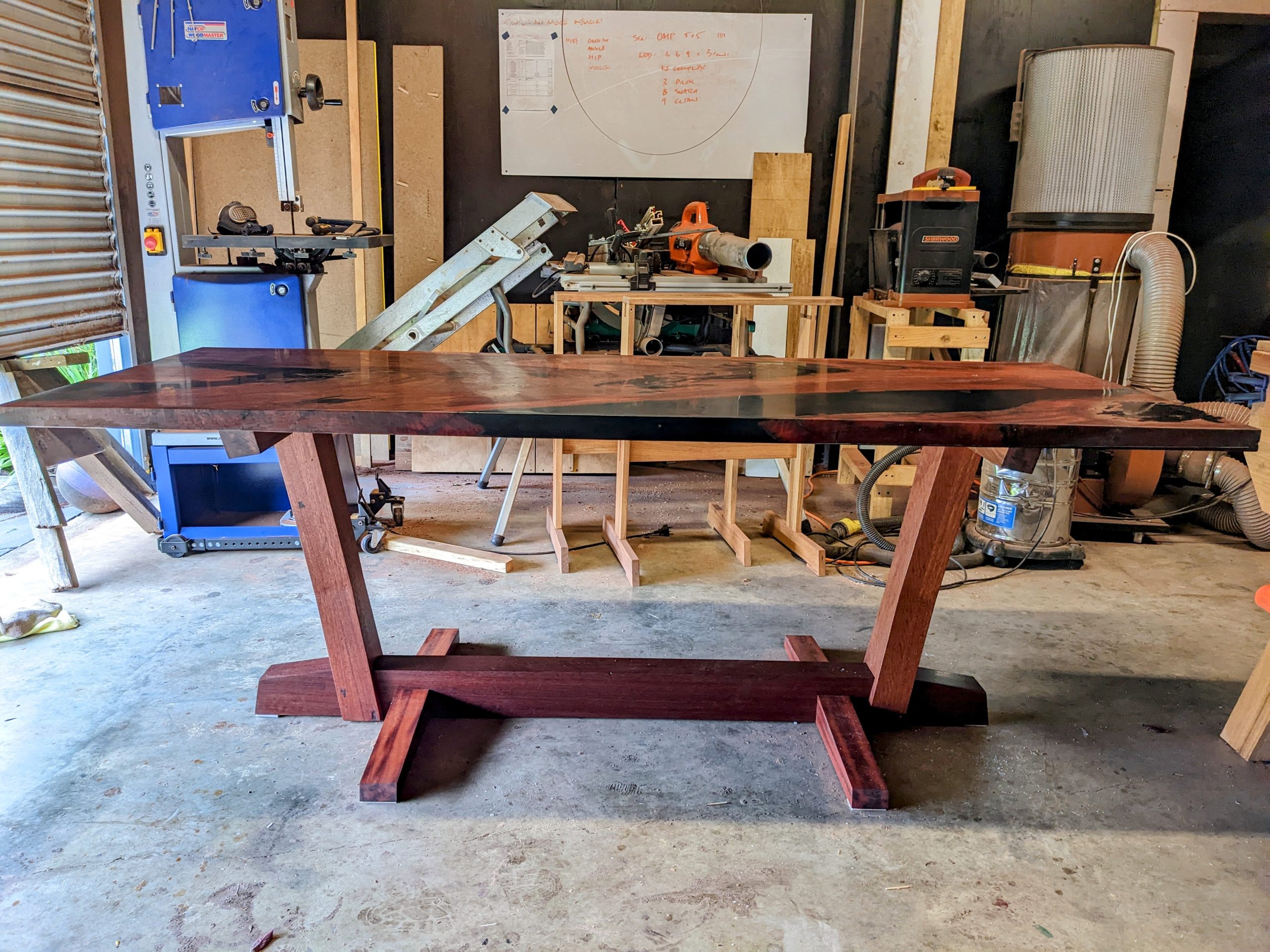No one, hopefully, expects a cheap Ikea bookcase to last forever. But if you’ve ever visited an antique store, you’ll have seen literal heaps of old furniture that was cheap and mass-produced back in the day yet has stood the test of time and is still in perfectly usable condition over a century later.
The unfortunate reality is that even mass-produced furniture was high quality 50 years ago. And now, furniture isn’t built like it used to be. Back in the day, ordinary people bought furniture to last a lifetime—a dresser for a kid going off to uni, a dining table for the whole family that eventually someone inherited. Nowadays, not only is it not a priority for people, but it would barely be possible if they tried.
Aussies are always hunting for the next in-style moment, ditching last year’s trend for whatever’s hot on TikTok. Meanwhile, overseas furniture factories are cutting corners with ever-cheaper materials and slave labour to boost profits and keep prices low. Yes, slave labour.
Even going to expensive retailers doesn’t guarantee quality. Numerous times I’ve been appalled at the prices charged – often higher than what I charge for a handmade piece – by ’boutique’ fashion stores that are selling the same cheap crap, just with better marketing. The absolute epitome of style over substance.
To understand why furniture is so crappy these days, you need to look at what it’s made of: cardboard. In the mid-20th century, even ordinary furniture was made in Australia from quality plywood and solid wood. Almost all mass-produced furniture is made in China from lousy particle boards, paper laminates, and the worst quality plywood in history. Even “solid wood” has become a marketing spin: it’s often rubberwood with a veneer.
It’s all about cutting costs. Rubberwood is cheap because it’s a byproduct of latex production, but its porous structure and short grain make it weak and friable. Chinese wood is also cheap because it’s harvested with total ignorance of the environment by people who are paid a few dollars a day for back-breaking work. Because of how it’s handled, the quality of the timber can be hit or miss.
Cheaper materials and construction go hand-in-hand with most new furniture’s journey across the ocean. Container shipping in the 1970s made it increasingly cheaper to transport stuff around the world.
Labour is cheapest in China and Southeast Asia, so that’s where big furniture companies make their crap. They cram as much furniture into each container to save even more money. The result? “Flat-pack” furniture that you have to put together yourself, with a bunch of Allen keys and screws. And if it is designed to come apart, it will, regardless of when you want it to.
Every inch and every gram matters when you’re shipping stuff. If you’re trying to fit more desks into a container, even a tiny extra space will make a big difference. But this comes at the expense of quality.
Lighter, thinner materials are better for shipping, so even if solid oak was cheap and plentiful, furniture factories would still use particleboard.
We’re stuck in a vicious cycle. Cheap manufacturing has made us expect furniture to be cheap and fall apart quickly. As a result, few people are willing to pay for better quality or are aware that it’s even an option to pay for better quality.
It’s crazy to think that people spend thousands on jewellery, iPhones, clothes, and games that Ubisoft deletes from their accounts but balk at spending the same on furniture that their family use every day for decades.
A significant portion of the blame can be placed on social media. Instead of seeing furniture as an investment, people are influenced by the latest online aesthetic, constantly seeking trendy pieces that match the current trend. A bright pink sofa might look cool on Instagram, but it’ll go out of fashion before you finish moving it in. Reupholstering would cost more than buying a new one. So, in the landfill it goes.
Factories can quickly change their production to make new things, and the internet means we see these new trends much faster. It’s created a throwaway culture.
This leads to a vast amount of waste. The EPA estimates that nearly 10 million tons of furniture went to US landfills in 2018.
If you want furniture that lasts, there are a few things to look for. A high price doesn’t necessarily mean it’s good quality, but buying something made in Australia is a good start. A piece made from solid wood like Red Gum, Blackwood, or Myrtle will likely last longer than you if the maker knows what they’re doing. Investing in durable furniture is not just a choice, it’s a smart decision that empowers you to make better purchasing decisions.
One way to get really high-quality furniture is to buy custom-made stuff, but it’s often prohibitively expensive. I’m currently making a dining table by hand for a client. It’s going to be 2500mm long, so it can seat up to 10 people. A 10-seater table at Ikea might cost around $2,000. This one will cost the client $11,300, including the Red Gum and 90 hours of my labour.
I am often guilty of getting stuck in the mindset that the things I make must be “special” and that I must include fine details and difficult techniques that elevate the piece beyond anything you could ever buy in a store.
The problem is that while creating something that blurs the line between utility and art is wonderful to do and to own, it also puts it beyond the reach of many people. It’s important to be reminded that just making something well—something simple and of high quality, something that looks nice and does its job well—is a very unusual thing these days. Perhaps there’s a market for simple but good handmade furniture.

